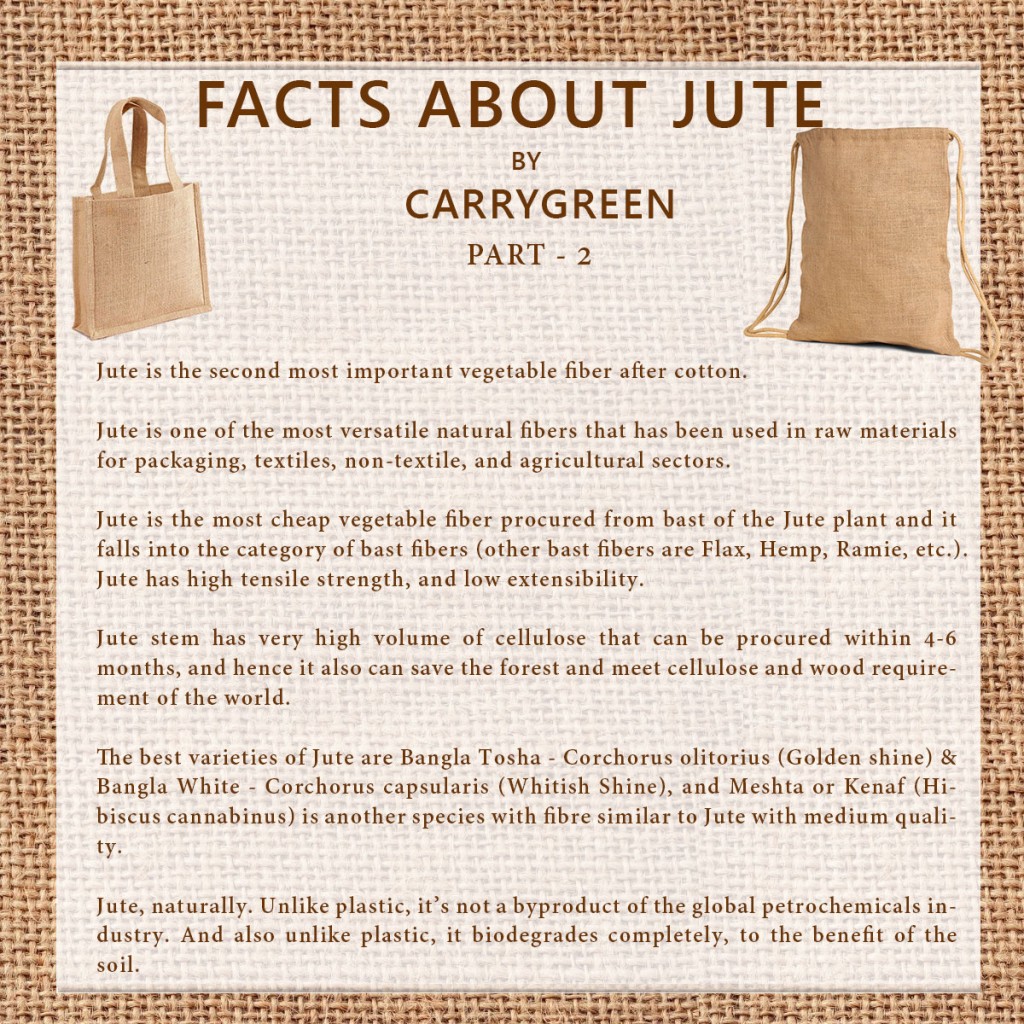Facts About Jute Part 2
Jute is the second most important vegetable fiber after cotton.
Jute is one of the most versatile natural fibers that has been used in raw materials for packaging, textiles, non-textile, and agricultural sectors.
Jute is the most cheap vegetable fiber procured from bast of the Jute plant and it falls into the category of bast fibers (other bast fibers are Flax, Hemp, Ramie, etc.).
Jute has high tensile strength, and low extensibility.
Jute stem has very high volume of cellulose that can be procured within 4-6 months, and hence it also can save the forest and meet cellulose and wood requirement of the world.
The best varieties of Jute are Bangla Tosha - Corchorus olitorius (Golden shine) & Bangla White - Corchorus capsularis (Whitish Shine), and Meshta or Kenaf (Hibiscus cannabinus) is another species with fibre similar to Jute with medium quality.
Jute, naturally. Unlike plastic, it’s not a byproduct of the global petrochemicals industry. And also unlike plastic, it biodegrades completely, to the benefit of the soil.

